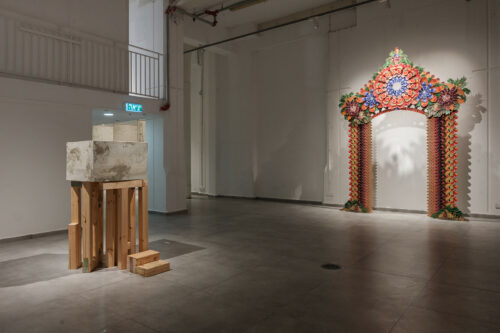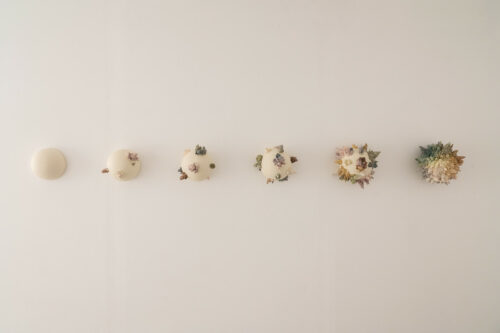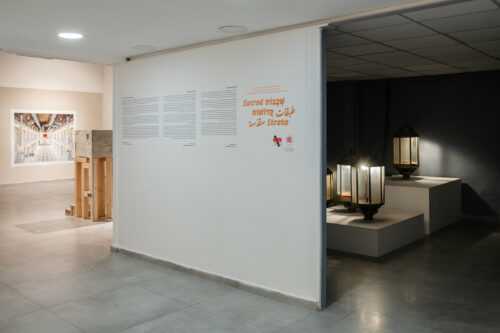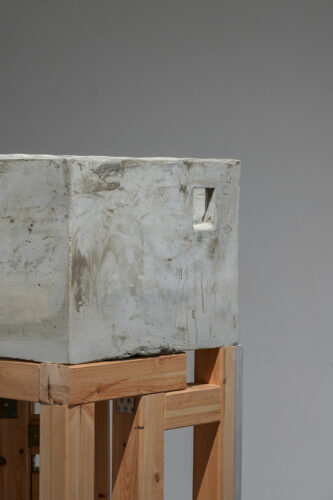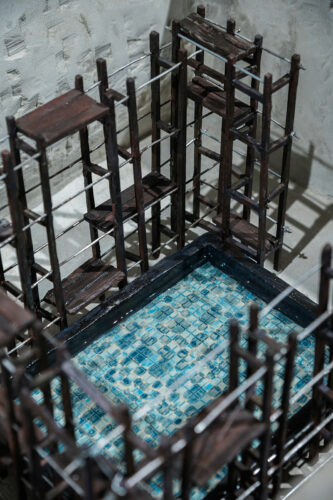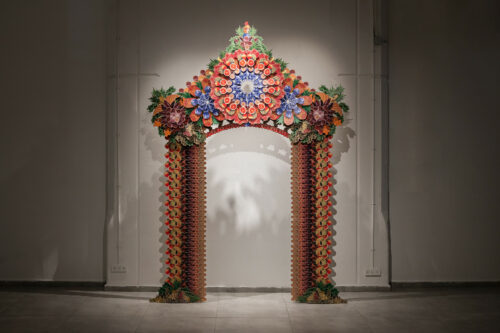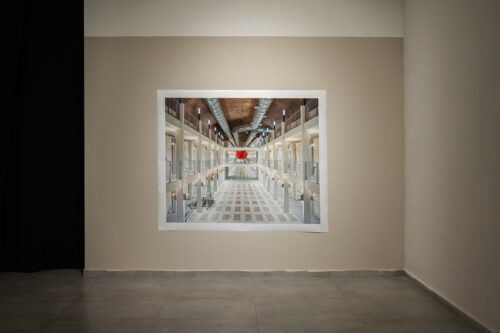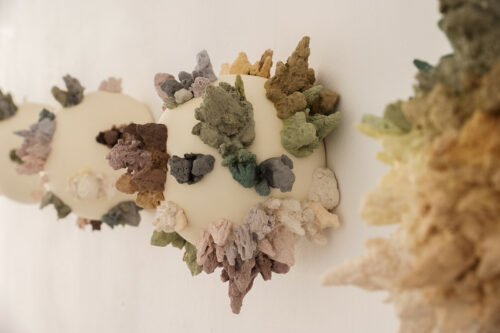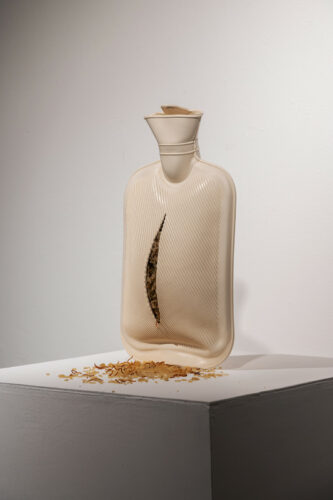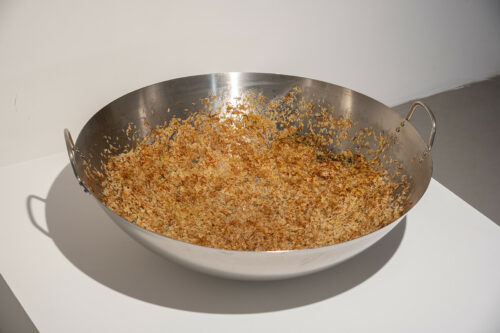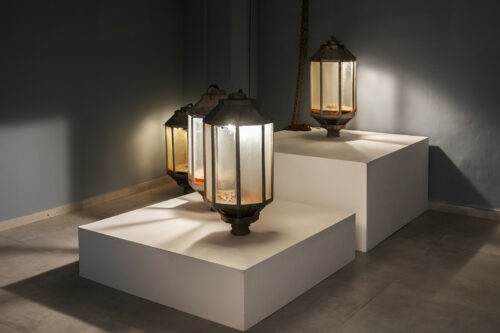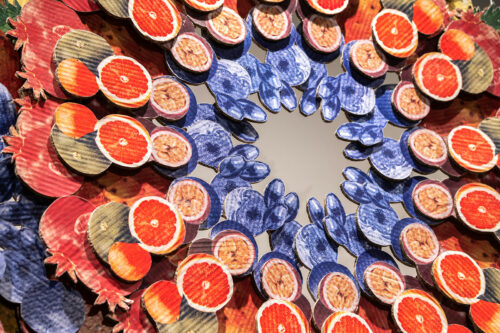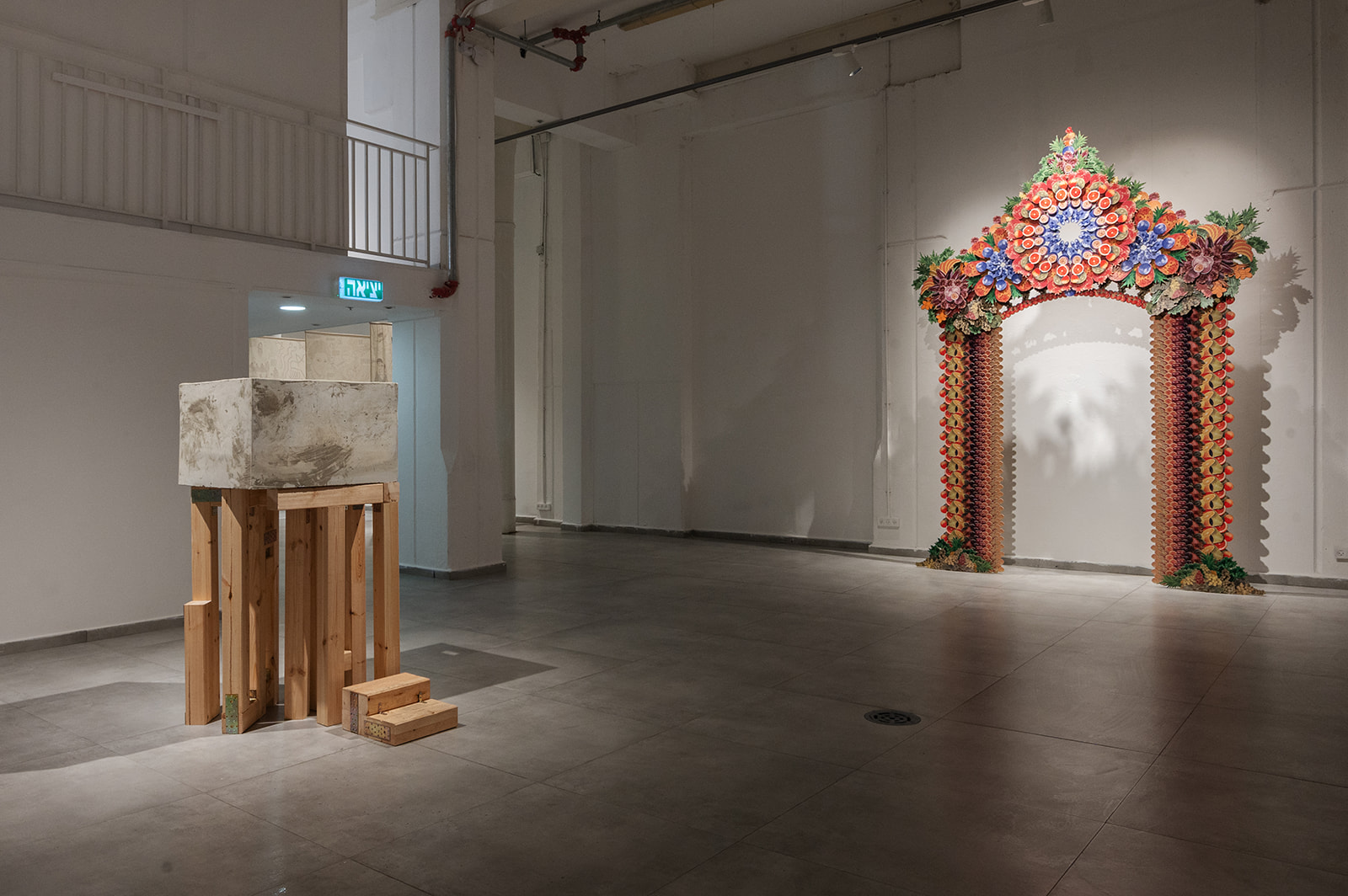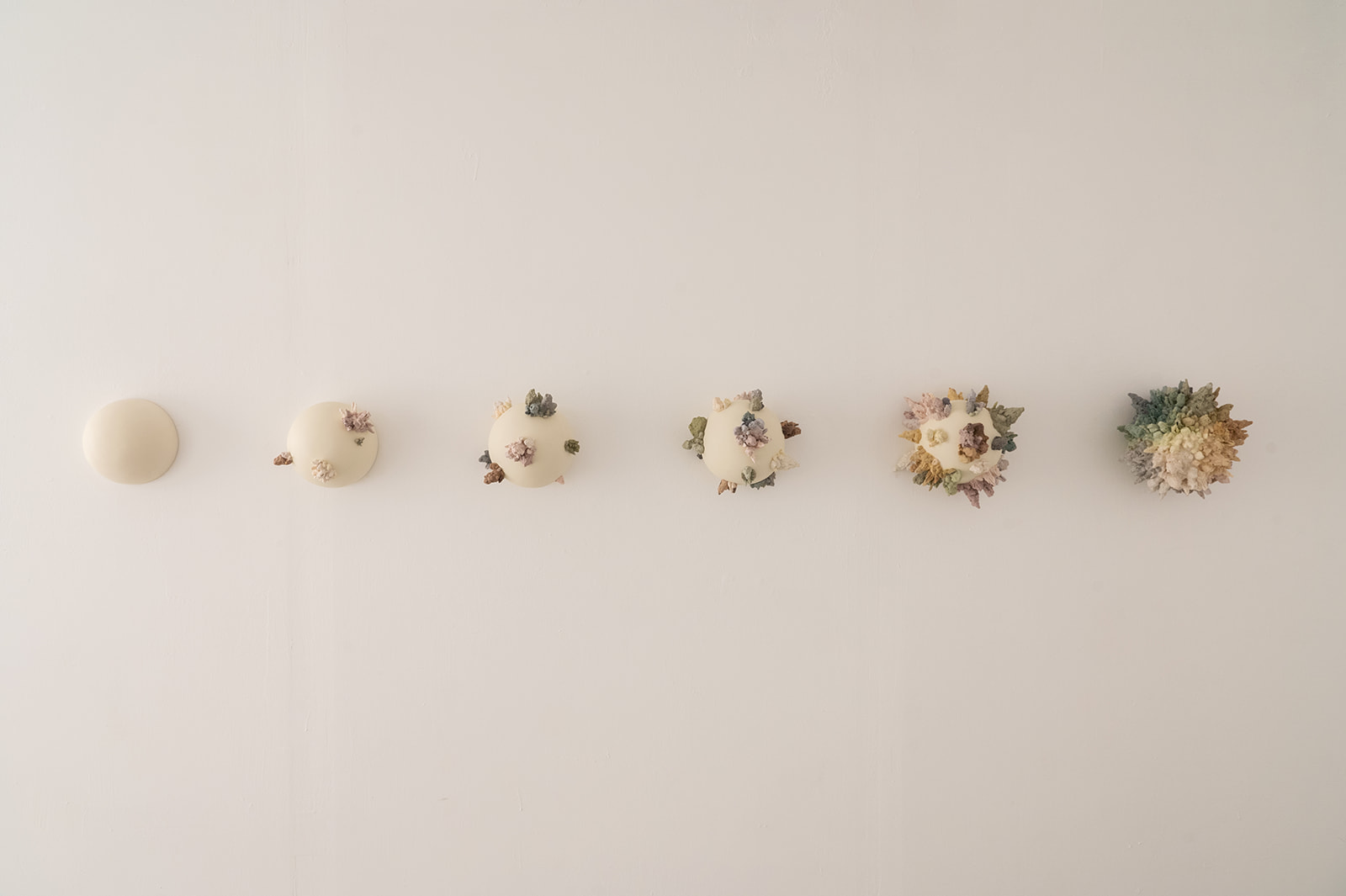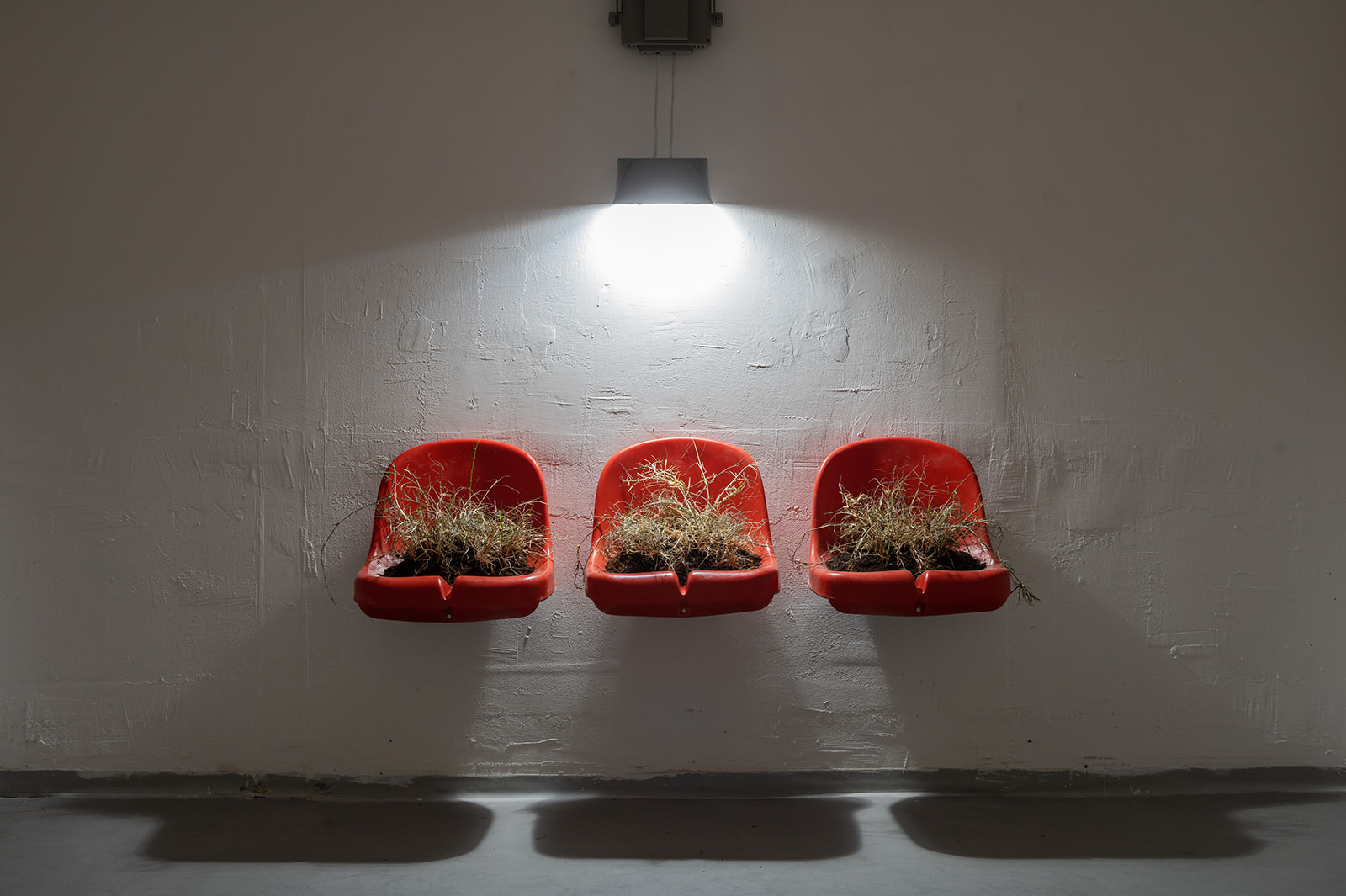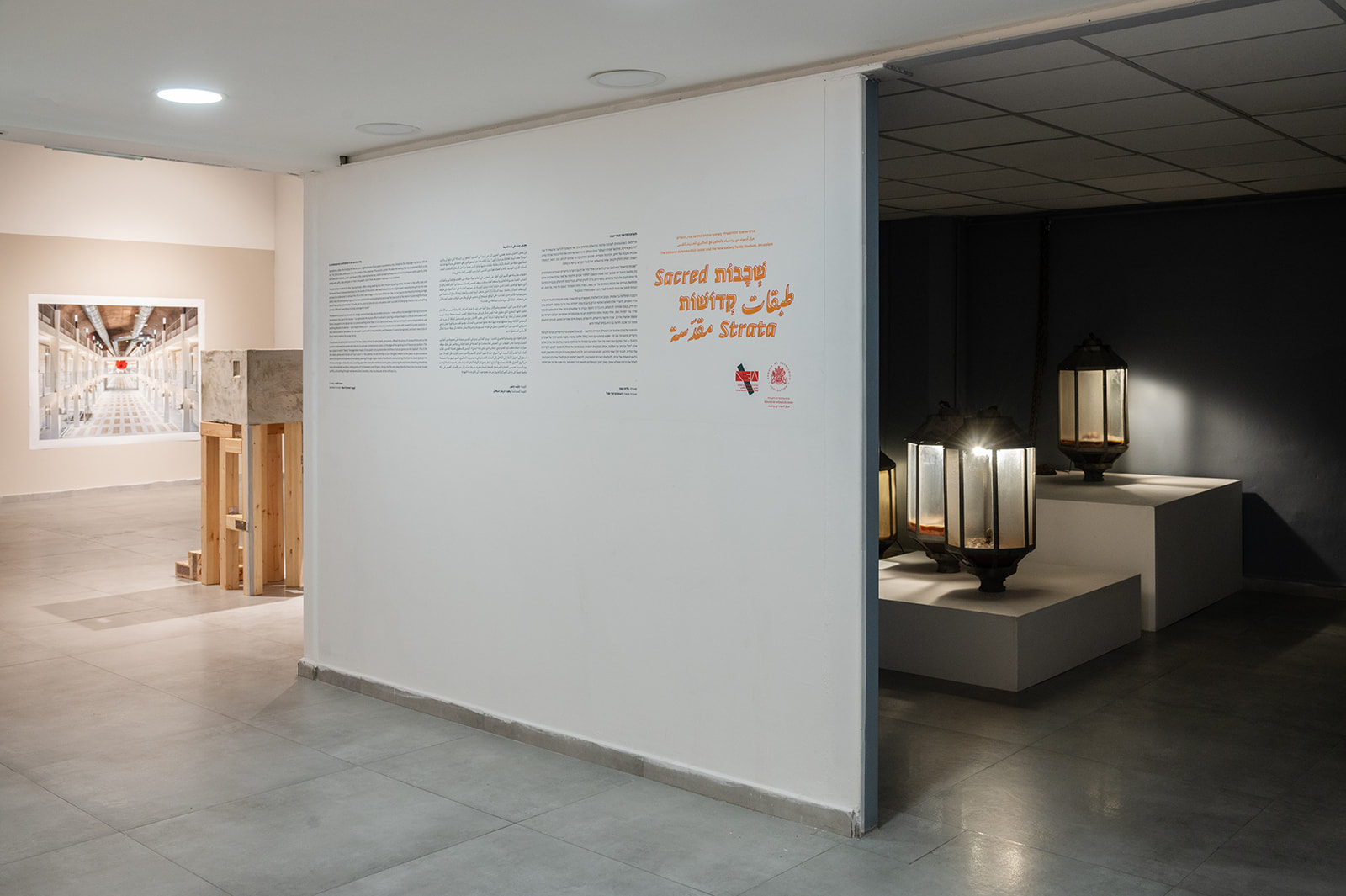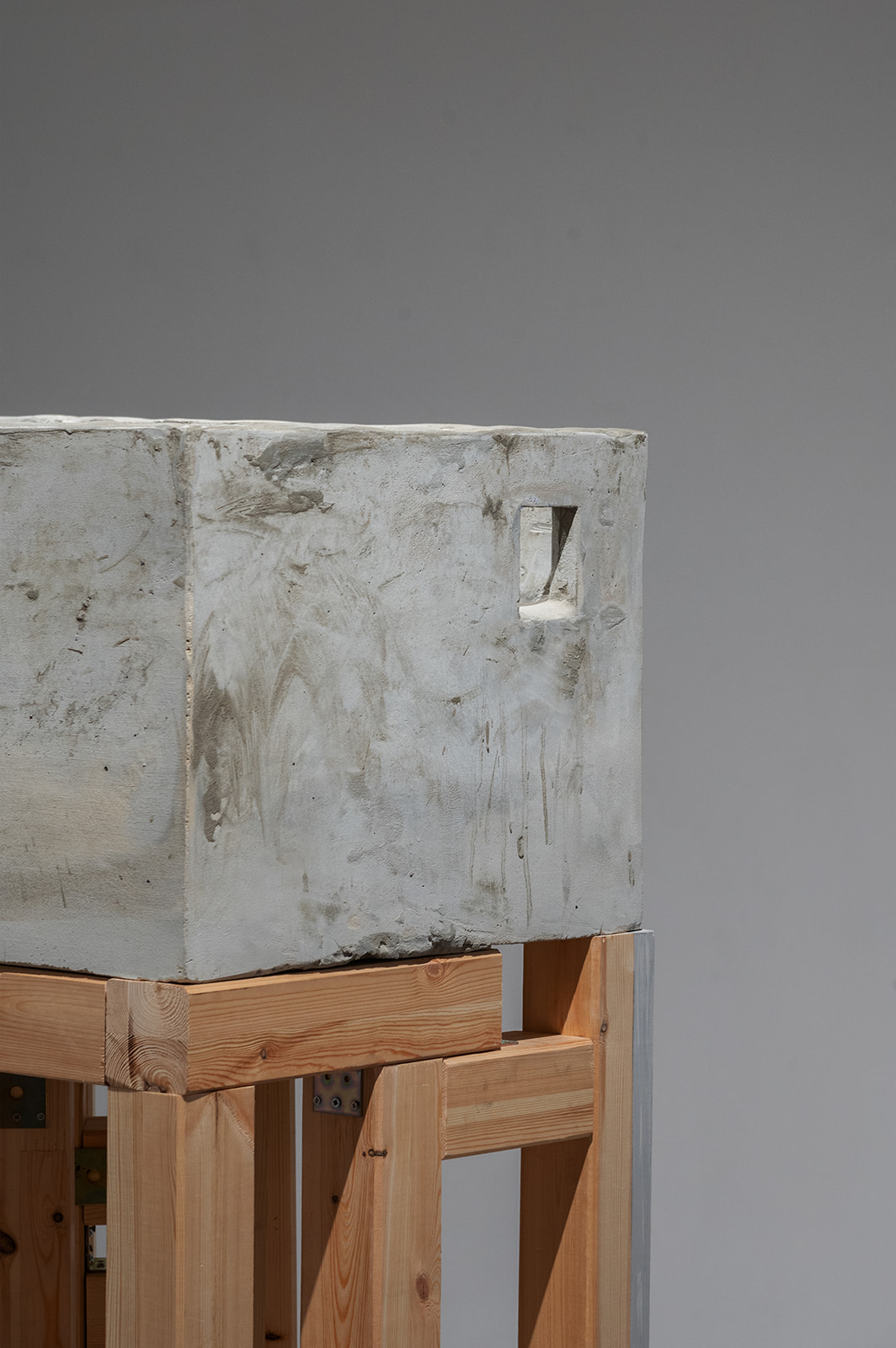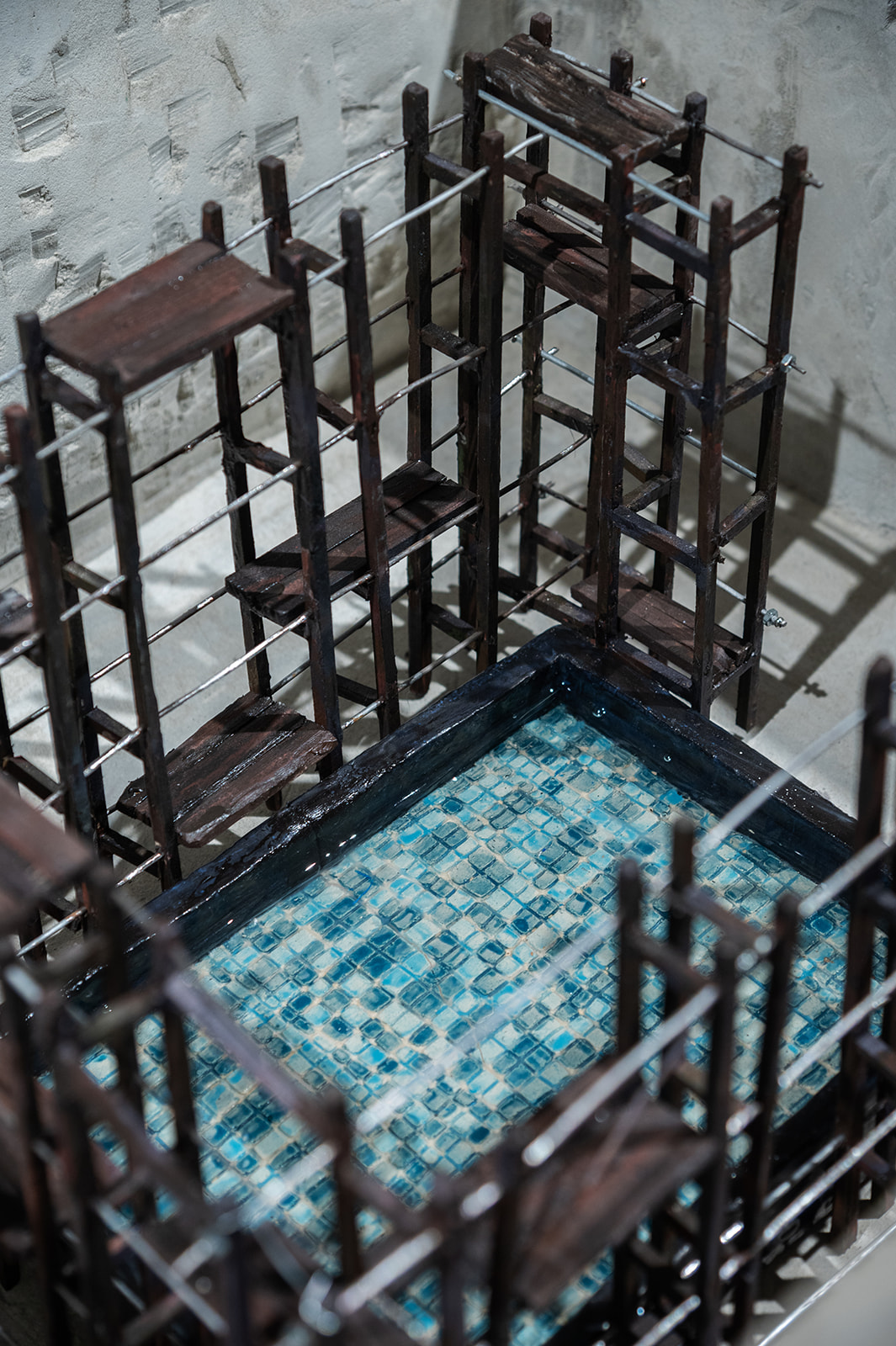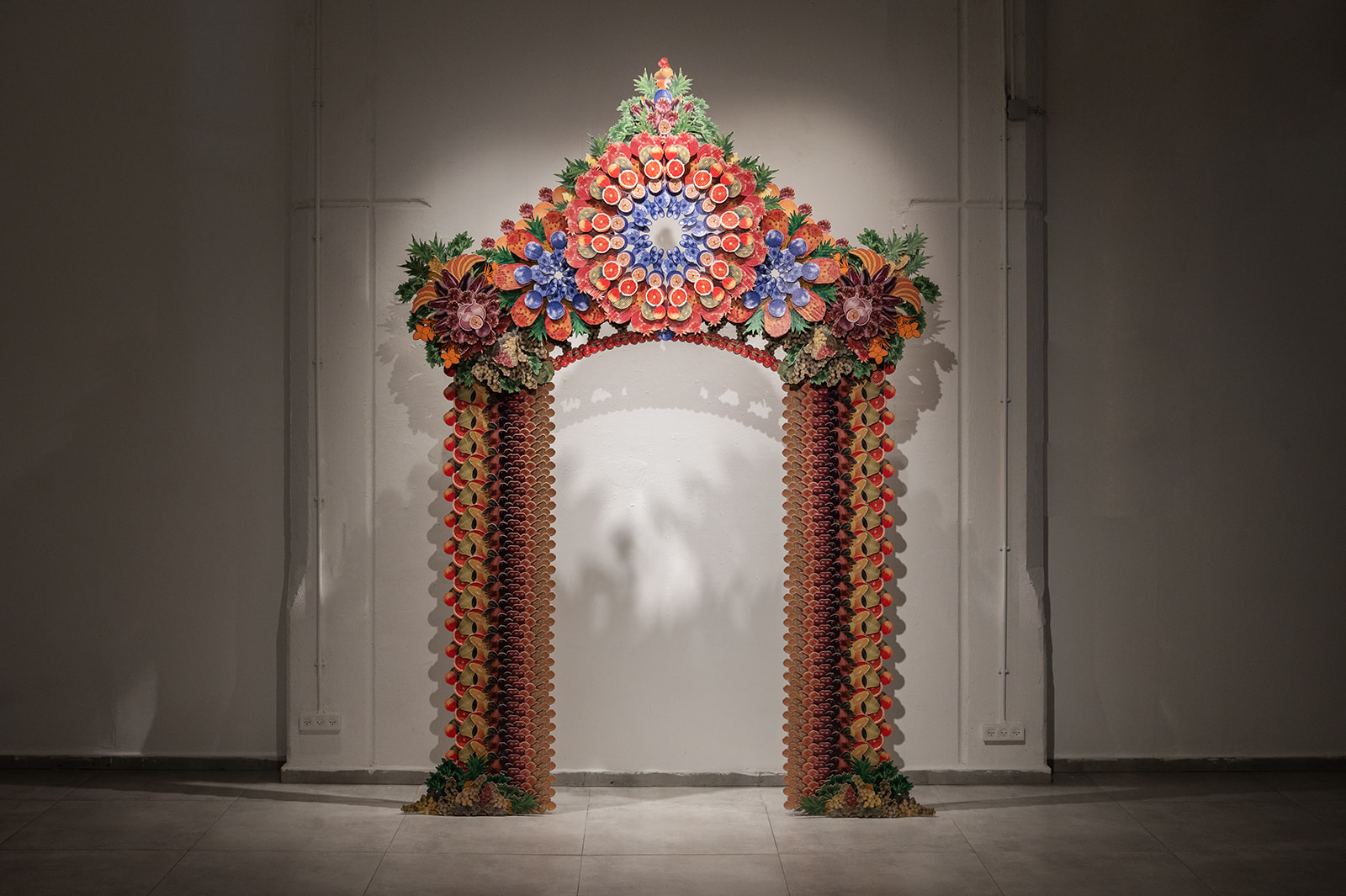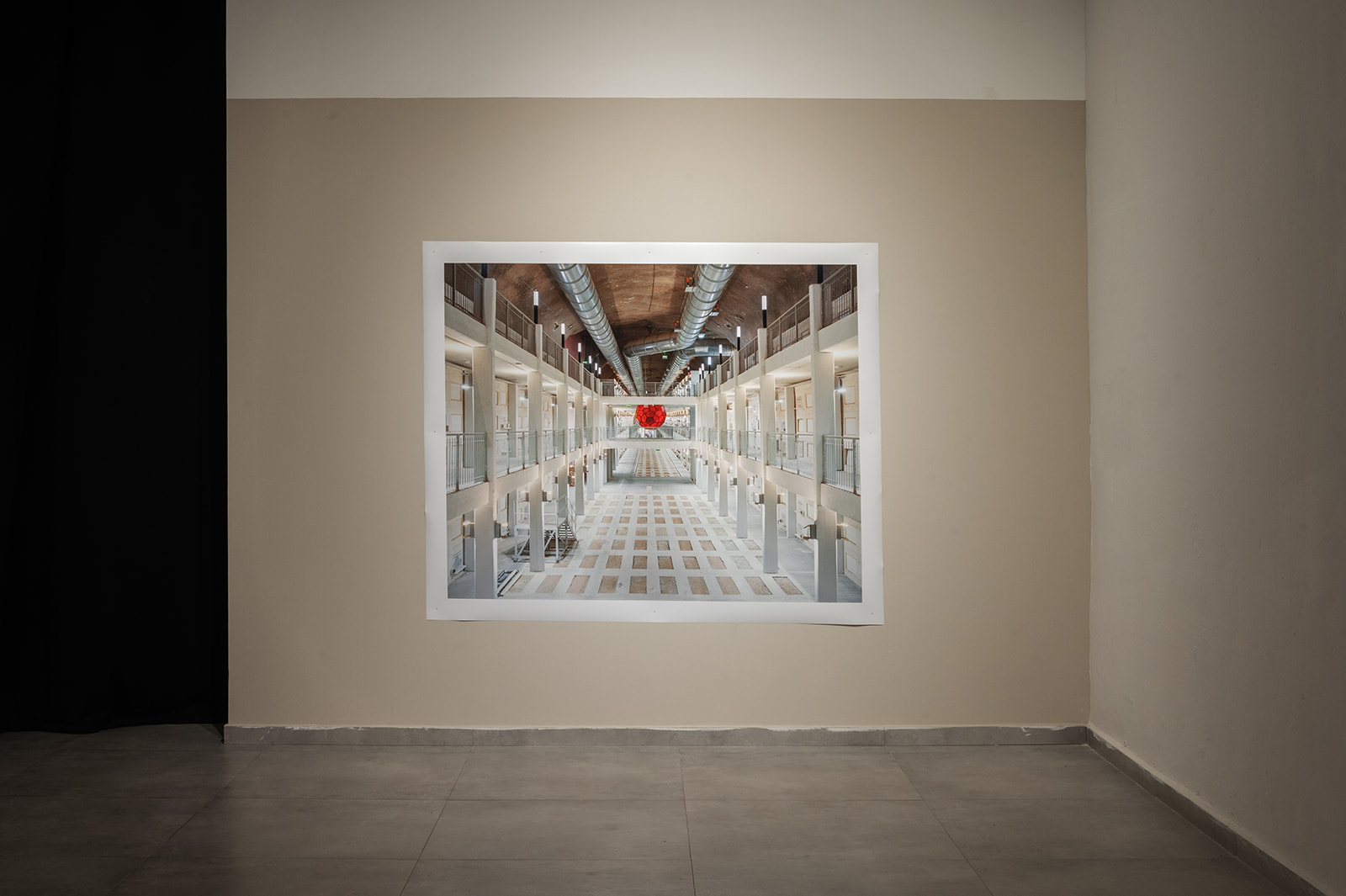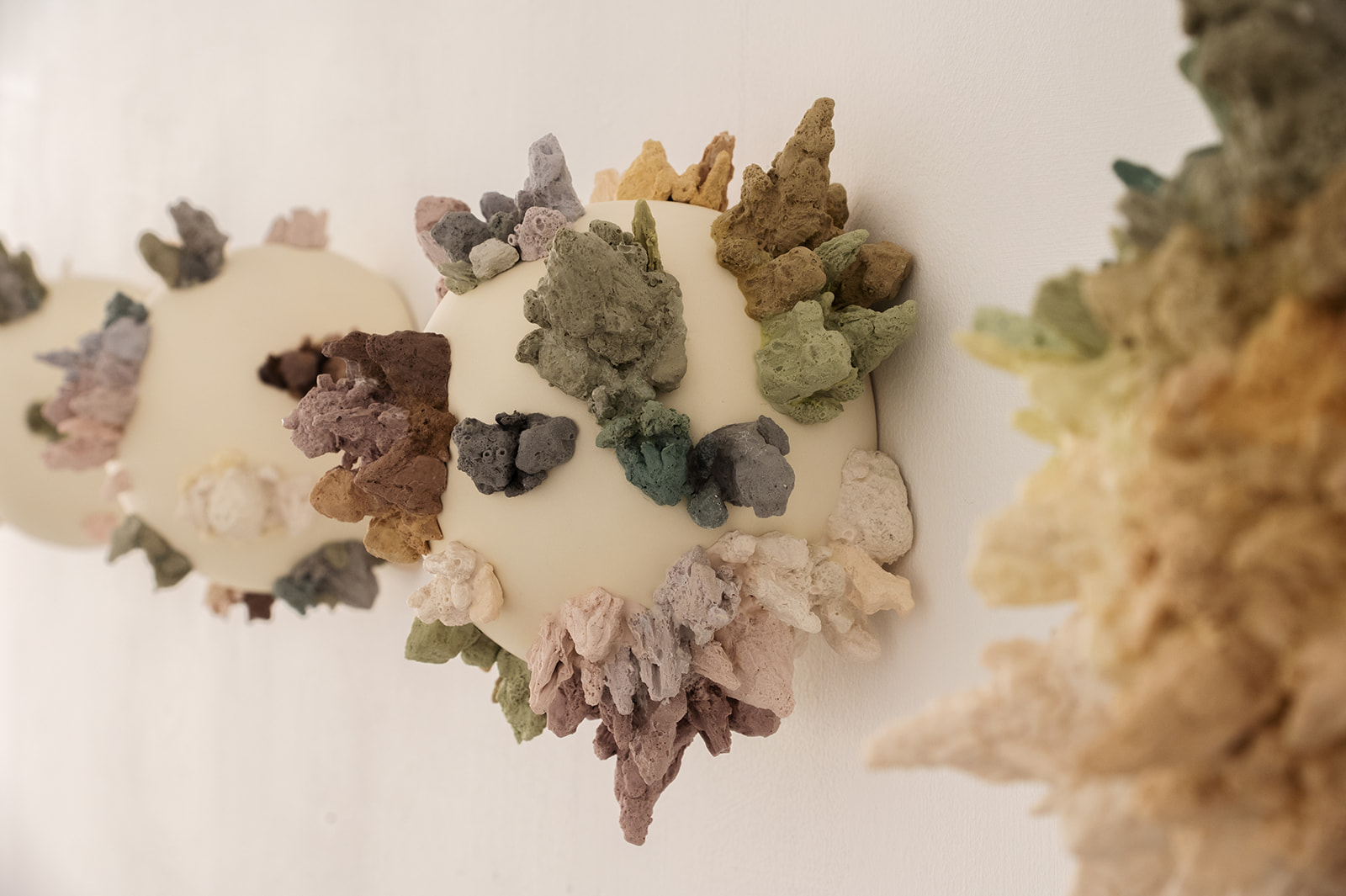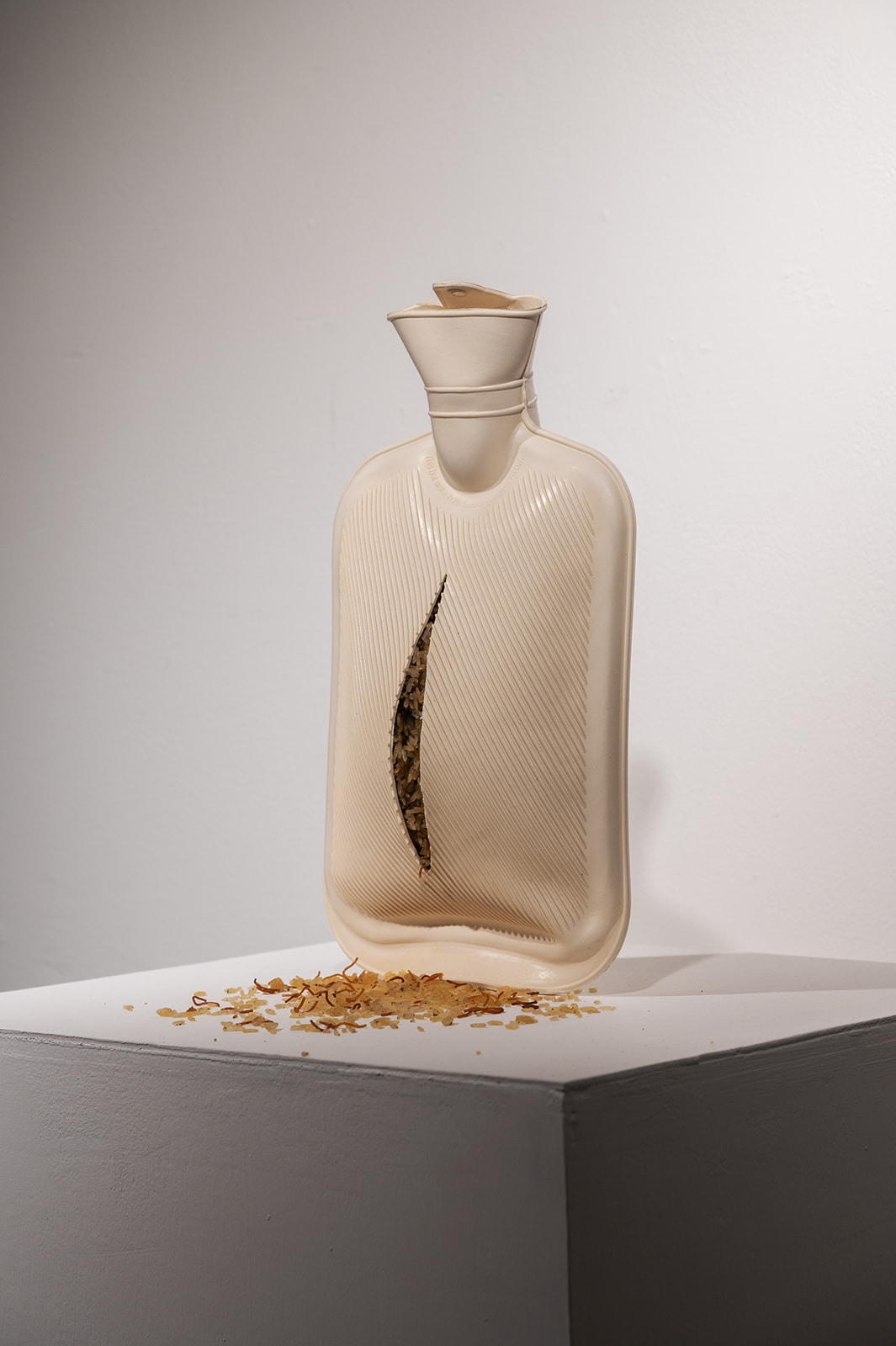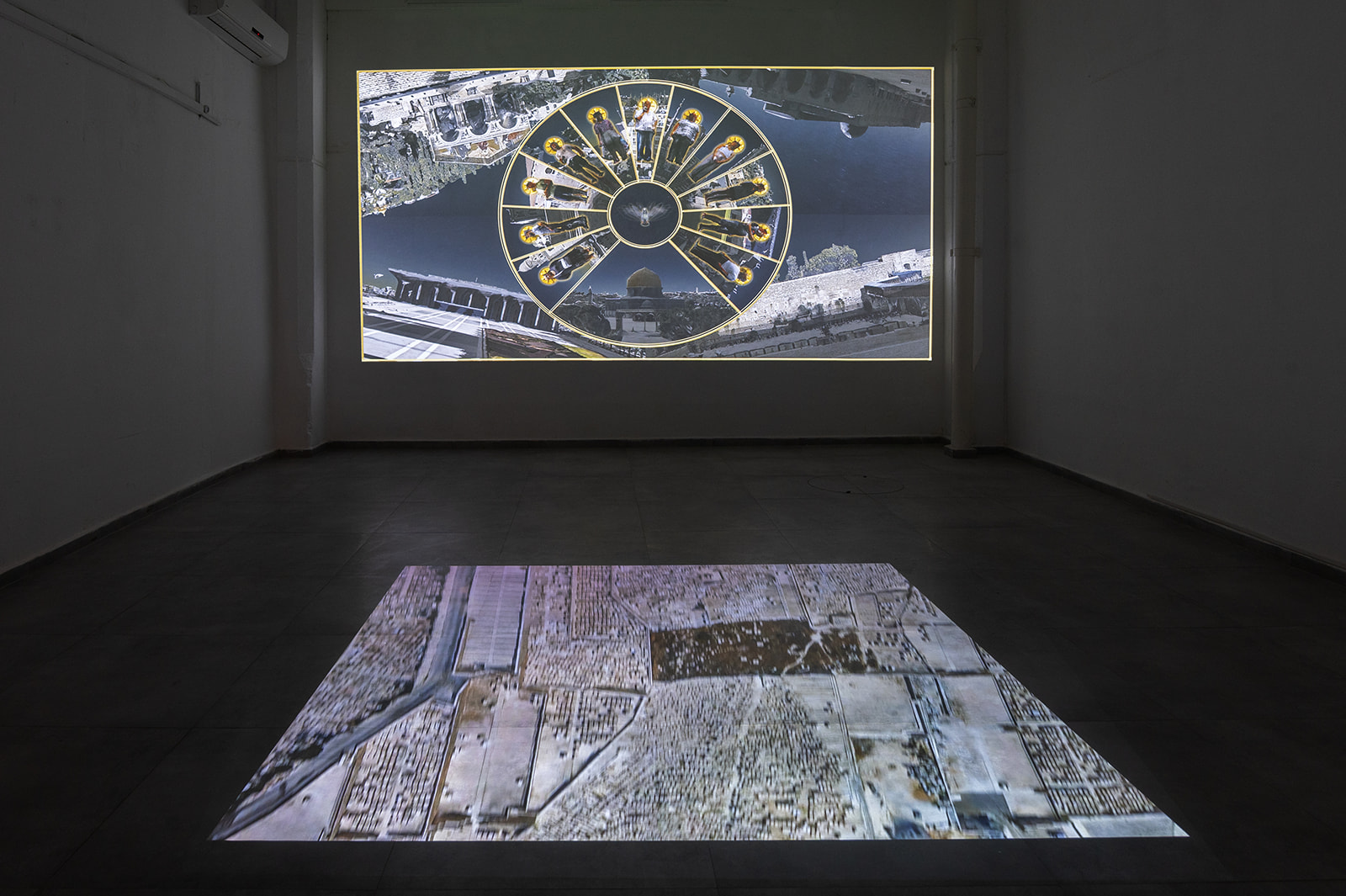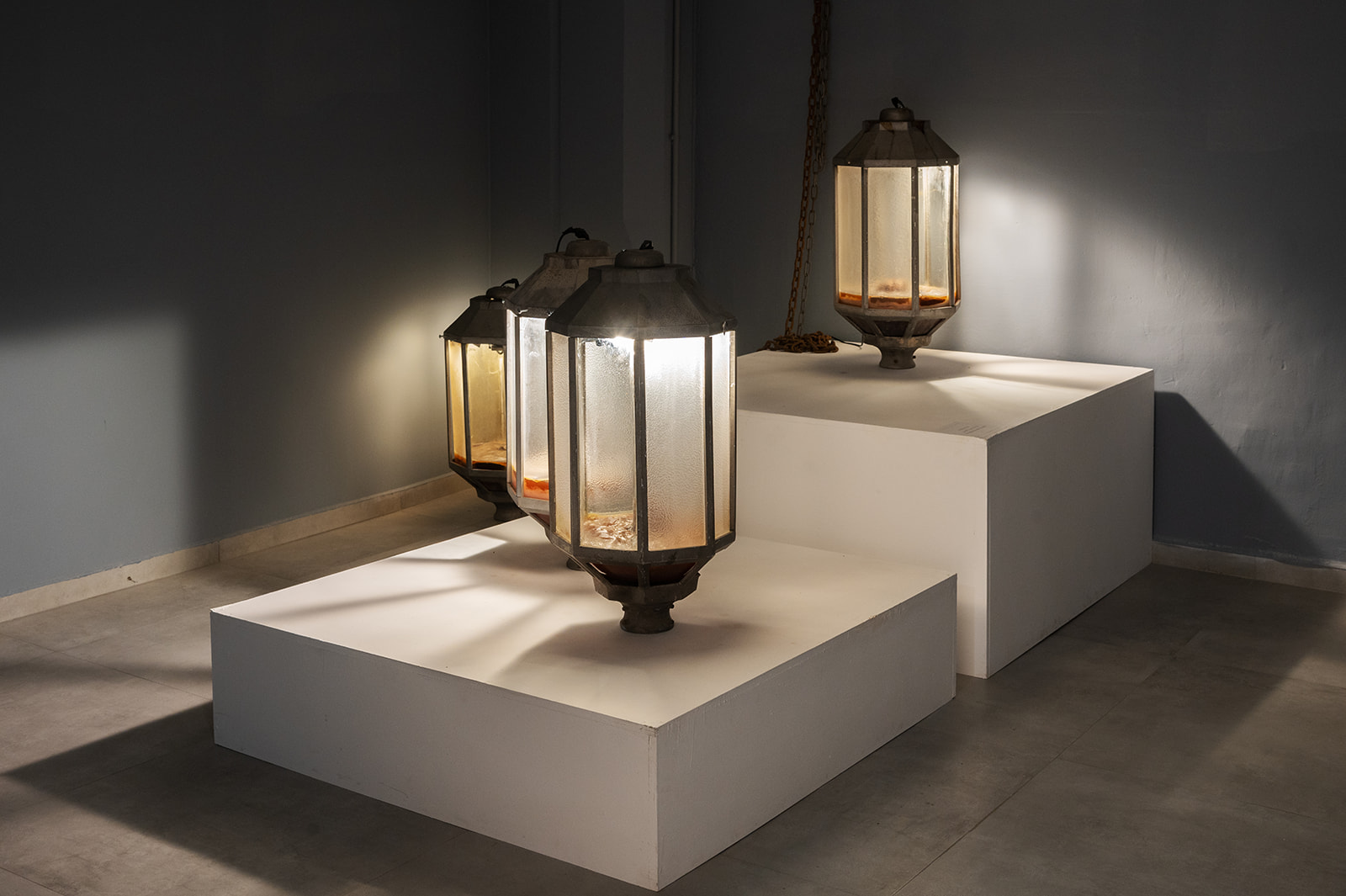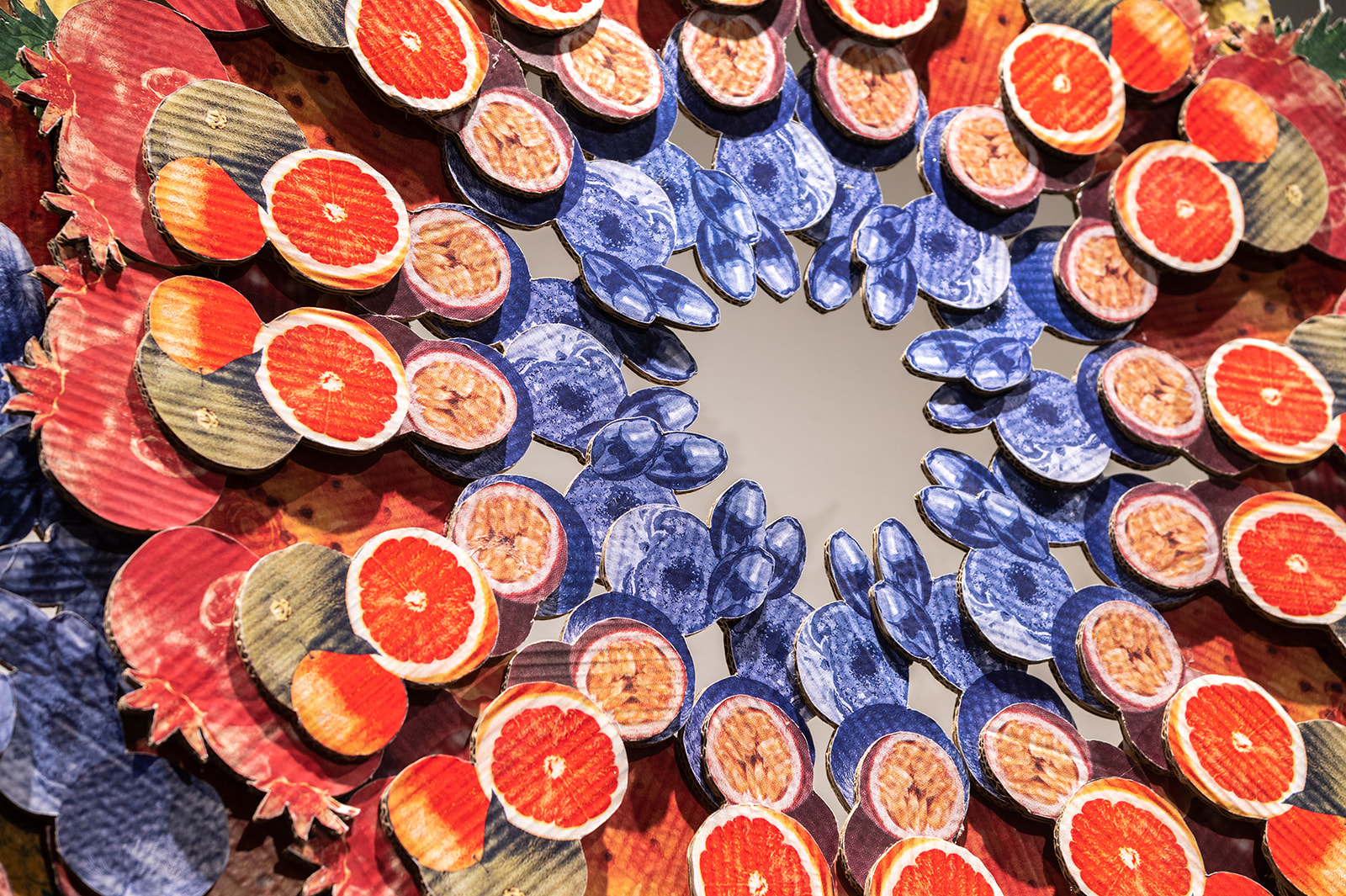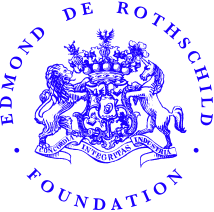A contemporary exhibition in an ancient city
Sometimes, when the longing for the Arnona neighborhood of Jerusalem overwhelms me, I listen to the message my father left for me: “Hi, this is Izika, calling you from the center of the universe.” The world’s center: this was the feeling that accompanied life in a city suffused with holiness. Layer upon layer of life, material memories, marks incised by those who arrived to conquer, settle, glorify, pray, safeguard, unify, take and give. Air from Jerusalem. Earth from Jerusalem. Holiness in a container.
The exhibition received its title, “Sacred Strata,” after a long walking tour with the participating artists. We met at the Jaffa Gate and for several hours listened attentively to the stories of the stones. We heard about dreams of glory and creativity brought by the new arrivals who attempted to reshape the city in their own image. At the close of the tour day, on our way to the Mamilla Parking Garage, while I was still attempting to ignore the new construction and looking around to see the low roofs of the Yemin Moshe neighborhood one of the artists commented: “Actually, at no point in time did any one person ever succeed in changing the city into something entirely different; everything is simply arranged in layers.”
The wonderful proximity between art, design, and archaeology also enables everyone – even without knowledge of dating structures according to the size of the stones – to appreciate the human effort involved in placing a unique shape in a city so overloaded with forms. Jerusalem is no tabula rasa, no canvas waiting to be filled. It is so dense and heavy that sometimes it seems impossible to add anything. Despite its density – and maybe thanks to it – Jerusalem’s intensity creates encounters with powerful human passions. A new creative work in Jerusalem, for Jerusalem, bears with it responsibility and freedom. It cannot be ignored, and each new stratum forms the foundation for a new future.
The Edmond de Rothschild Center and the New Gallery and Studios, Teddy Stadium, Jerusalem, offered the group of young artists and us the curators a renewed encounter with the city in a secular, contemporary space, at the edge of the parking lot of the soccer stadium. This was a place in which “Teddy,” the legendary mayor of Jerusalem, encountered the tradition of soccer games on the Sabbath. This is the site where yellow and red are not “just colors” on the palette. We are striving to turn the gaze inward to the space, to give ourselves over to the quiet and coolness of the Gallery, passing through a gate made of cardboard, encountering streetlamps, looking deep into the new underground burial areas, touching upon the noise of a weekend soccer game, caressing the set stones, listening attentively to an embroidered narrative, rolling grains of rice between one’s fingers, diving into the very deep Mamilla Pool, into the Arab-Israeli conflict, and exiting through Har Hamenuchot Cemetery, into the disquiet of the Infinite City.
